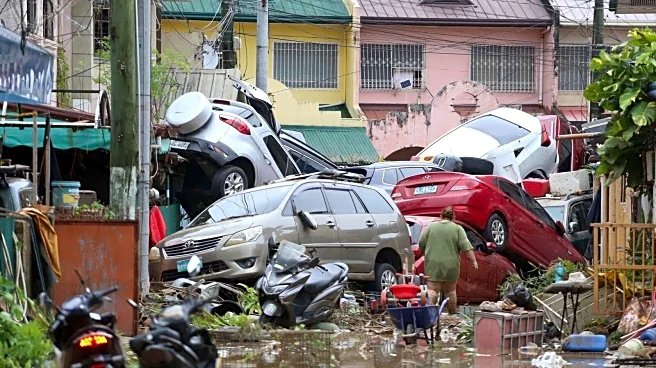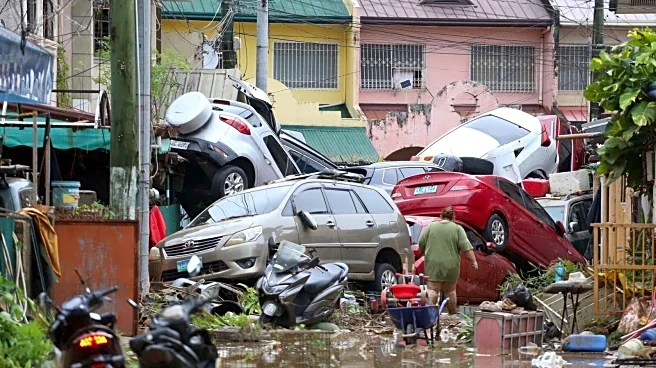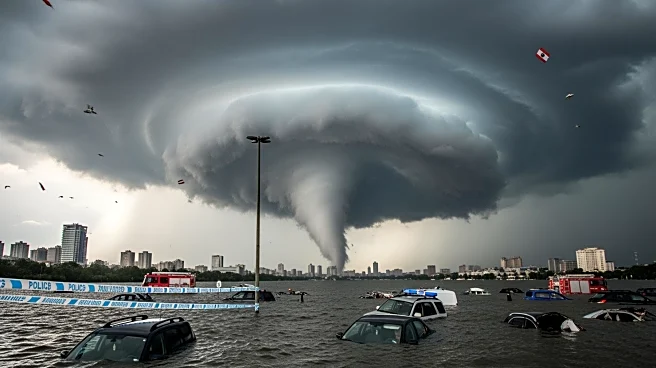What's Happening?
Typhoon Kalmaegi has wreaked havoc across the central Philippines, resulting in the deaths of at least 26 individuals, primarily due to flooding. The storm, which struck the region on Tuesday, has caused
significant damage, trapping residents on rooftops and submerging vehicles. In addition to the fatalities from the typhoon, a separate incident involving a Philippine air force helicopter crash in Agusan del Sur province claimed six more lives. The helicopter was on a mission to deliver humanitarian aid to areas affected by the storm. The typhoon, with winds reaching 130 kph and gusts up to 180 kph, is expected to move into the South China Sea soon. The storm has led to widespread evacuations, with over 387,000 people seeking refuge in safer areas. The disaster has also disrupted transportation, with numerous flights canceled and sea travel halted due to rough conditions.
Why It's Important?
The impact of Typhoon Kalmaegi underscores the vulnerability of the Philippines to natural disasters, given its geographical location. The storm's devastation highlights the ongoing challenges faced by the country in terms of disaster preparedness and response. The loss of life and property damage will likely strain local resources and necessitate international aid and support. The incident also raises concerns about the safety and reliability of emergency response operations, as evidenced by the helicopter crash. The economic implications are significant, with disruptions in transportation and potential impacts on agriculture and local businesses. The situation calls for a reassessment of disaster management strategies to better protect communities and infrastructure from future calamities.
What's Next?
As Typhoon Kalmaegi moves away from the Philippines, recovery and relief efforts are expected to intensify. Authorities will focus on providing aid to affected communities, restoring power, and repairing infrastructure. The government may seek international assistance to support these efforts. There will likely be an evaluation of current disaster response protocols to improve future preparedness. The incident may also prompt discussions on climate resilience and the need for sustainable development practices to mitigate the impact of such natural disasters.
Beyond the Headlines
The recurring nature of such disasters in the Philippines highlights the broader issue of climate change and its role in intensifying weather patterns. The country's experience with frequent typhoons and other natural calamities may serve as a case study for global discussions on climate adaptation and resilience. Additionally, the cultural and social resilience of the Filipino people, who have faced numerous disasters, is a testament to their strength and adaptability. However, there is a pressing need for systemic changes to ensure long-term safety and sustainability.












